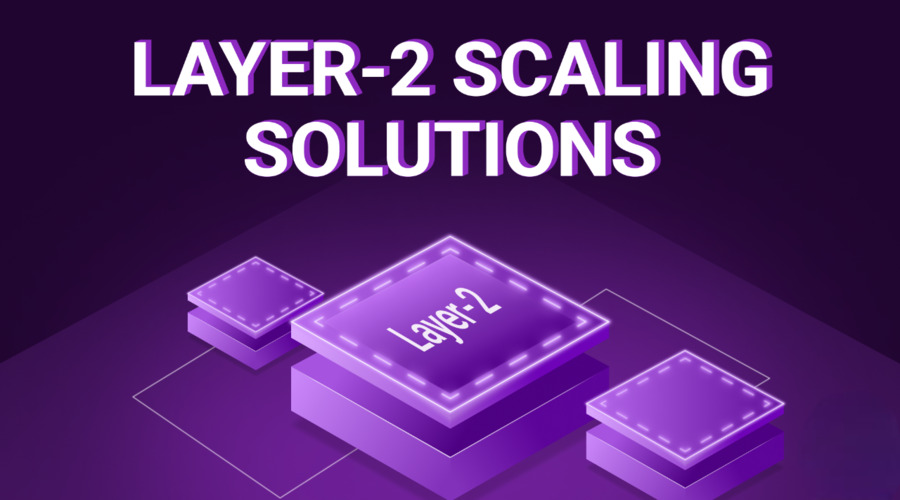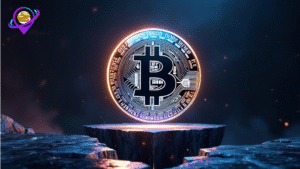Decentralized Finance (DeFi) has gained significant popularity in recent years, revolutionizing traditional financial systems by providing open, permissionless, and transparent alternatives. However, as DeFi continues to grow, challenges regarding security and scalability have emerged. To address these challenges, Layer 2 solutions have emerged as a promising way to enhance both security and scalability in the DeFi space.
Understanding Layer 2 Solutions
What are Layer 2 Solutions?
Layer 2 solutions are protocols or technologies built on top of existing blockchain networks to enhance their capabilities. They offer off-chain solutions that reduce the burden on the underlying blockchain, enabling faster transactions, lower fees, and improved scalability. Layer 2 aims to address the limitations of the base layer without compromising security.
Benefits of Layer 2 Solution
Layer 2 brings several advantages to the DeFi ecosystem. Firstly, they enable faster and more cost-effective transactions by moving most of the computational work off-chain. This reduces congestion on the main blockchain and significantly improves transaction speeds. Secondly, Layer 2 enhances scalability by allowing multiple transactions to be bundled together and submitted to the main chain as a single transaction. This batching technique optimizes resource utilization and increases the overall throughput of the network. Lastly, these solutions enable a more user-friendly experience by reducing gas fees and ensuring a smoother interaction with decentralized applications (DApps).
Examples of Layer 2 Solutions
Some prominent examples of Layer 2 solutions include Rollups, Sidechains, and State Channels. These solutions employ different techniques to achieve their goals while ensuring compatibility with existing blockchain networks.
Enhancing DeFi Security with Layer 2 Solutions

Challenges of DeFi Security
While DeFi offers numerous opportunities, it also poses unique security challenges. The decentralized nature of DeFi protocols makes them susceptible to various risks, including smart contract vulnerabilities, hacking attempts, and phishing attacks. These security concerns have resulted in significant financial losses for users and have hindered the widespread adoption of DeFi applications.
Role of Layer 2 Solution in Security Enhancement
Layer 2 plays a crucial role in enhancing the security of DeFi applications. By moving most of the transactions off-chain, they reduce the exposure of user funds to potential vulnerabilities. The off-chain nature of Layer 2 provides an additional layer of protection against smart contract exploits and attacks targeting the underlying blockchain. Furthermore, Layer 2 employs various security mechanisms, such as cryptographic proofs and dispute resolution protocols, to ensure the integrity and trustworthiness of off-chain transactions. These mechanisms help mitigate risks and enhance the overall security posture of the DeFi ecosystem.
Features of Secure Layer 2 Solution
Secure Layer 2 incorporates robust security measures to safeguard user funds and assets. One of the key features is encryption, which protects sensitive information and ensures the confidentiality of off-chain transactions. Layer 2 also employs techniques such as zero-knowledge proofs to provide cryptographic guarantees without revealing sensitive data. Secure Layer 2 solutions also implement transparent governance models, encouraging community participation and audits to identify and fix vulnerabilities promptly. By prioritizing security and adopting best practices, Layer 2 provides users with a more secure environment to engage in DeFi activities.
Scaling DeFi with Layer 2 Solutions
Scalability Challenges in DeFi
Scalability is a critical challenge in the DeFi ecosystem. As more users participate in DeFi protocols, the limitations of the underlying blockchain become apparent. High transaction fees and network congestion can lead to slower transaction speeds and reduced scalability, hampering the growth and adoption of DeFi applications.
How Layer 2 Solution Addresses Scalability Issues
Layer 2 solutions offer a promising solution to address the scalability challenges in DeFi. By moving a significant portion of the transactional load off-chain, Layer 2 alleviate congestion on the main blockchain, resulting in faster and more efficient transactions. These solutions bundle multiple transactions into a single transaction on the main chain, optimizing resource utilization and significantly increasing the overall throughput of the DeFi ecosystem. With Layer 2, users can enjoy faster confirmation times, lower transaction costs, and a seamless user experience, even during periods of high network activity.
Popular Layer 2 Scaling Techniques
Layer 2 solutions employ various scaling techniques to enhance the scalability of DeFi. One popular technique is Rollups, which bundle multiple transactions together and submit them as a single transaction to the main chain. This batching approach significantly reduces gas fees and improves efficiency. Another technique is Sidechains, which create separate chains that can process transactions independently. By offloading transactions to sidechains, the main blockchain is relieved from processing every transaction, leading to improved scalability. State Channels are another scaling technique that enables off-chain transactions between participants. By conducting frequent and repetitive interactions off-chain and settling the final state on the main chain, state channels enable fast and inexpensive transactions, contributing to improved scalability in DeFi.
Prominent Layer 2 Solutions in DeFi
- Rollups: Rollups are a popular Layer 2 solution that combines multiple transactions into a single transaction submitted to the main chain. They are further classified into two types: Optimistic Rollups and Zero-Knowledge Rollups. Optimistic Rollups rely on fraud proofs to ensure transaction validity, while Zero-Knowledge Rollups employ zk-SNARKs to achieve transaction scalability and privacy. Rollups provide a practical and efficient way to scale DeFi applications while maintaining a strong security model.
- Sidechains: Sidechains provide an independent blockchain that can process transactions separately from the main chain. They enable faster and more scalable transactions, reducing the load on the main blockchain. Sidechains can either be connected to the main chain through bridges or operate as standalone chains. This flexibility allows for the seamless transfer of assets between the main chain and sidechains, expanding the scalability and interoperability of the DeFi ecosystem.
- State Channels: State channels allow participants to conduct off-chain transactions while preserving the security guarantees of the underlying blockchain. By keeping the majority of interactions off-chain, state channels achieve fast and inexpensive transactions. These channels are particularly suitable for frequent and repetitive interactions between participants, such as microtransactions or gaming applications. State channels enable instant settlements and significantly reduce transaction costs, making DeFi more accessible to a broader audience.
Layer 2 Solutions: A Future Perspective
The future of Layer 2 solutions in DeFi holds great promise. As the technology continues to advance, we can expect further innovations and improvements in security, scalability, and user experience.
Innovations in Layer 2 are already underway, exploring new techniques and approaches to enhance the capabilities of these solutions. Researchers and developers are actively working on advancements in privacy-preserving techniques, cross-chain compatibility, and interoperability between Layer 2 and different blockchain networks.
The ongoing development and adoption of Layer 2 will contribute to the maturation of the DeFi ecosystem, making it more accessible, secure, and efficient. As these solutions become more user-friendly and seamlessly integrated with existing DeFi protocols, they will attract a broader user base and drive the mainstream adoption of decentralized finance.
Conclusion
Layer 2 solutions play a vital role in addressing the challenges of security and scalability in the DeFi space. By moving transactions off-chain and employing innovative scaling techniques, Layer 2 offer faster transactions, reduced fees, and improved scalability, making DeFi more accessible and user-friendly. Prominent solutions such as Rollups, Sidechains, and State Channels are paving the way for the future of DeFi, providing enhanced security, interoperability, and privacy. As the technology continues to evolve, we can expect further advancements and a broader range of Layer 2, shaping the landscape of decentralized finance.
FAQs
Q1. Are Layer 2 solutions safe for DeFi transactions?
Yes, Layer 2 incorporates robust security measures to ensure the safety of DeFi transactions. They employ encryption, cryptographic proofs, and dispute-resolution protocols to safeguard user funds and assets.
Q2. How do Layer 2 solutions improve scalability in DeFi?
Layer 2 enhances scalability in DeFi by moving a significant portion of the transactional load off-chain. They bundle multiple transactions together and submit them to the main chain as a single transaction, reducing congestion and improving overall throughput.
Q3. Can Layer 2 solutions be combined with other DeFi protocols?
Yes, Layer 2 solutions are designed to be compatible with existing blockchain networks and DeFi protocols. They can be integrated seamlessly to enhance the capabilities of decentralized applications and improve user experience.
Q4. What role do Rollups play in Layer 2 solutions?
Rollups play a crucial role in Layer 2 by bundling multiple transactions together and submitting them as a single transaction to the main chain. This batching technique optimizes resource utilization, reduces gas fees, and improves transaction efficiency.
Q5. How do Layer 2 solutions contribute to the future of DeFi?
Layer 2 paves the way for the future of DeFi by addressing critical challenges such as security and scalability. Their continuous development and adoption will likely drive mainstream adoption of decentralized finance, bringing increased accessibility and user-friendly experiences.
Q6. How do Layer 2 solutions impact transaction fees in DeFi?
Layer 2 solutions have a significant impact on transaction fees in DeFi. By moving most of the transactional load off-chain, Layer 2 reduce the demand for on-chain resources, leading to lower transaction fees. Users can enjoy more cost-effective transactions and participate in DeFi activities without the burden of high gas fees commonly associated with the main blockchain. Layer 2 solutions contribute to a more sustainable and accessible DeFi ecosystem by making transactions more affordable for users.






